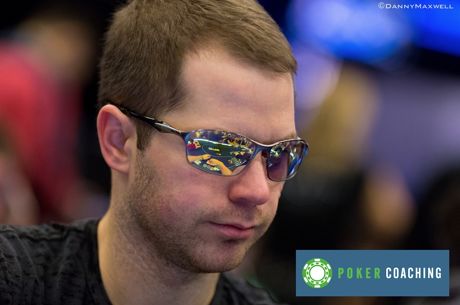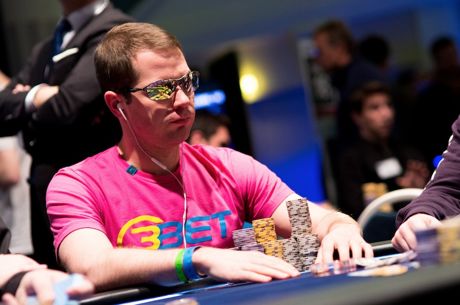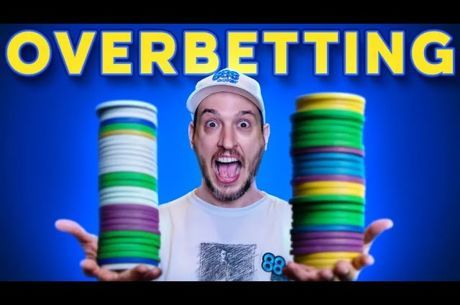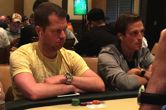Poker Coaching with Jonathan Little: Playing Pocket Jacks

In a $1,000 buy-in live event with blinds at 200/400 with a 50 ante, a tight-aggressive young player raised to 900 out of his 20,000 effective stack from second position and another young European player who I had no read on called from the cutoff. Everyone else folded to me in the big blind with J♥J♣. I decided to call.
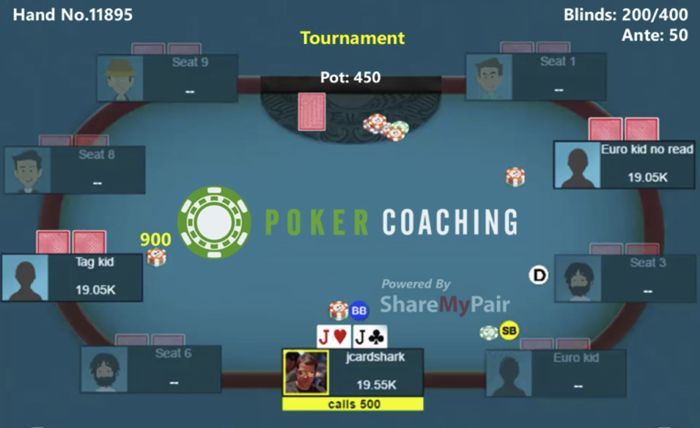
I much prefer calling to three-betting in this situation, because if I three-bet and get action, I will have to play what will often be a marginal hand in a bloated pot from out of position. If I instead call, I keep the pot size manageable and make it less likely that I have to play for my entire stack by the river. Especially in tournaments, it is important that you minimize the chance that you go broke on any individual hand, especially when you are not in excellent shape.
Given the initial early position raiser should have a strong range and I am out of position, taking the conservative line makes the most sense. If this were a cash game where I could rebuy if I went broke, three-betting could easily be the best play.
The flop came 10♥4♥K♦. I checked and so did the initial raiser, then the cutoff bet 1,300 into the 3,350 pot.
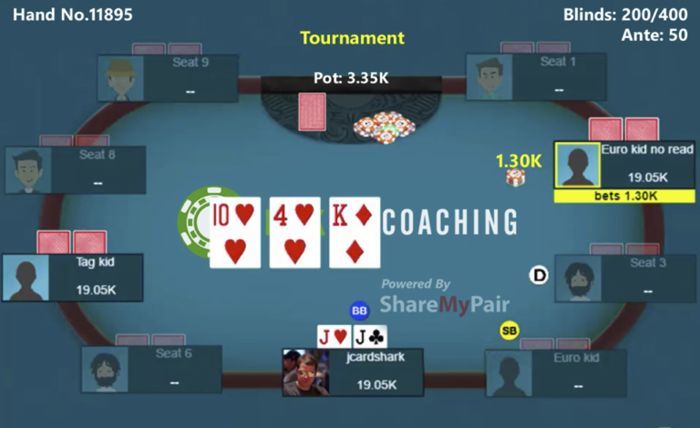
I called and the initial raiser folded.
This is a tough spot because when the initial raiser checks, he usually has a marginal or junky hand. This means that the cutoff only has to worry about me having a decent hand. That should lead him to bet with a wide range including any decent pair or draw.
Against that range, given my excellent pot odds, J♥J♣ is too strong to fold. While calling from out of position with an underpair that is unlikely to improve on many turns is certainly not fun, if I fold, my opponents will be able to run me over by simply mindlessly betting whenever I check.
The turn was the J♦, making the board 10♥4♥K♦J♦. I checked and the cutoff checked behind.
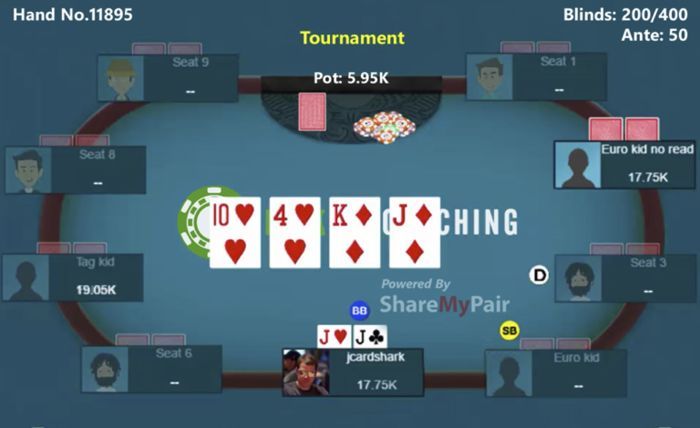
Clearly the turn is excellent for my hand. Despite this, checking is often the correct play, especially if I think my opponent will continue betting the turn with a wide range.
Given my range is somewhat capped at top pair (besides the sporadic turned straight, set, or two pair), the cutoff should usually continue value betting the turn with all his strong made hands while also bluffing with all his junk. If I decide to lead when I drastically improve, I should be sure to lead with some number of draws in order to keep my opponent guessing. Against competent players, I never want to make a play that is only for value.
The river brought the 6♦, making the board 10♥4♥K♦J♦6♦. The pot is 5,950 with 17,750 remaining stacks.
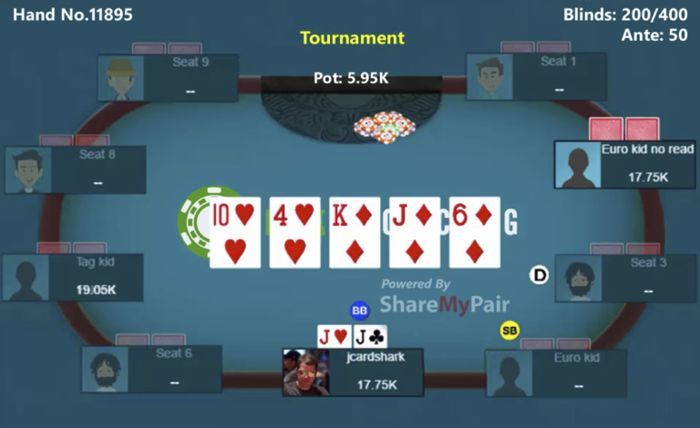
Should I check, bet 1,400, bet 3,800 or bet 8,000?
To find out what I think the best play is, and to get my full analysis of this hand, click over to Poker Coaching.
You can also get free access to over 80 interactive poker hand quizzes just like this one for 7 days, with detailed analysis from me after every decision you make. Visit Poker Coaching to find out more.
Jonathan Little is a professional poker player and author with over $6,300,000 in live tournament earnings. He writes a weekly educational blog and hosts a podcast at JonathanLittlePoker.com. You can follow him on Twitter @JonathanLittle.

